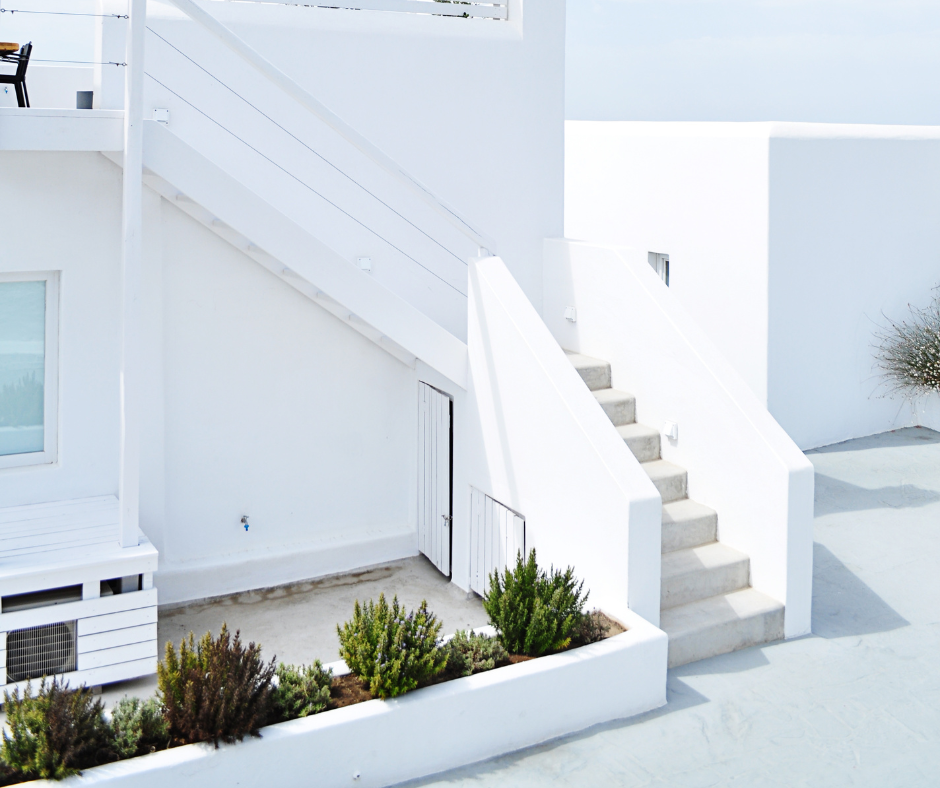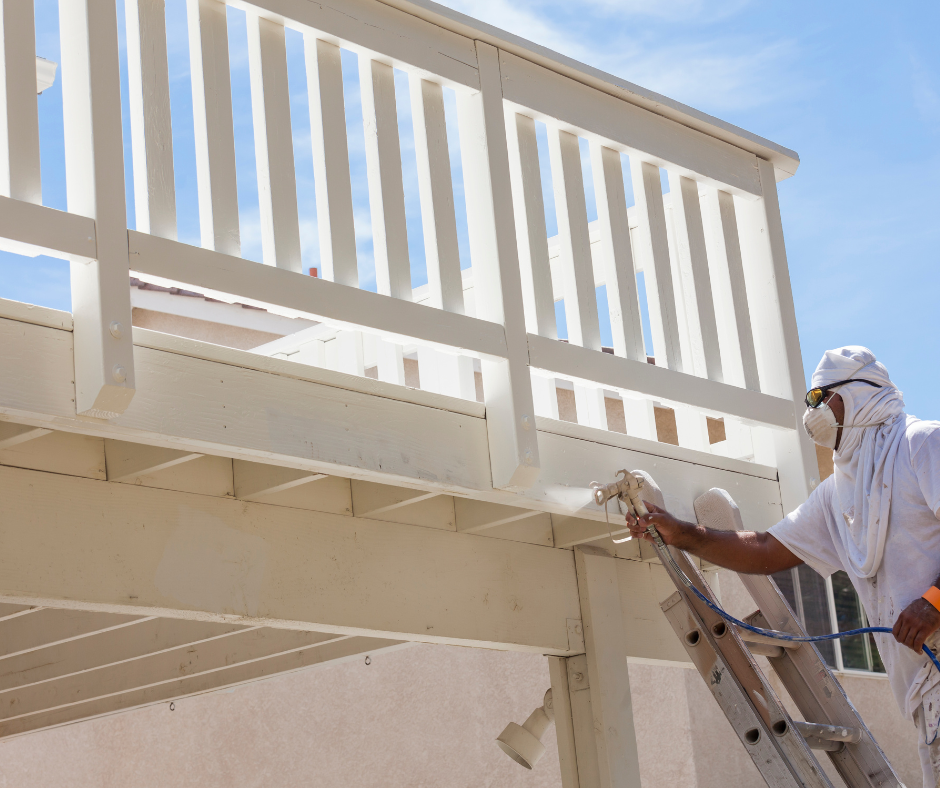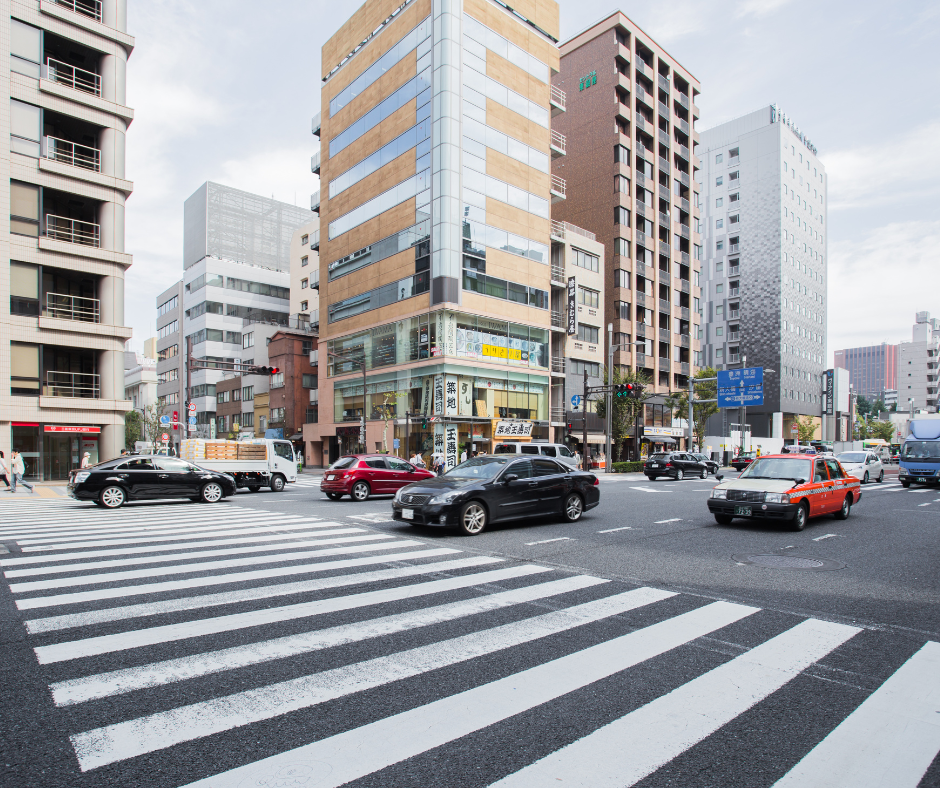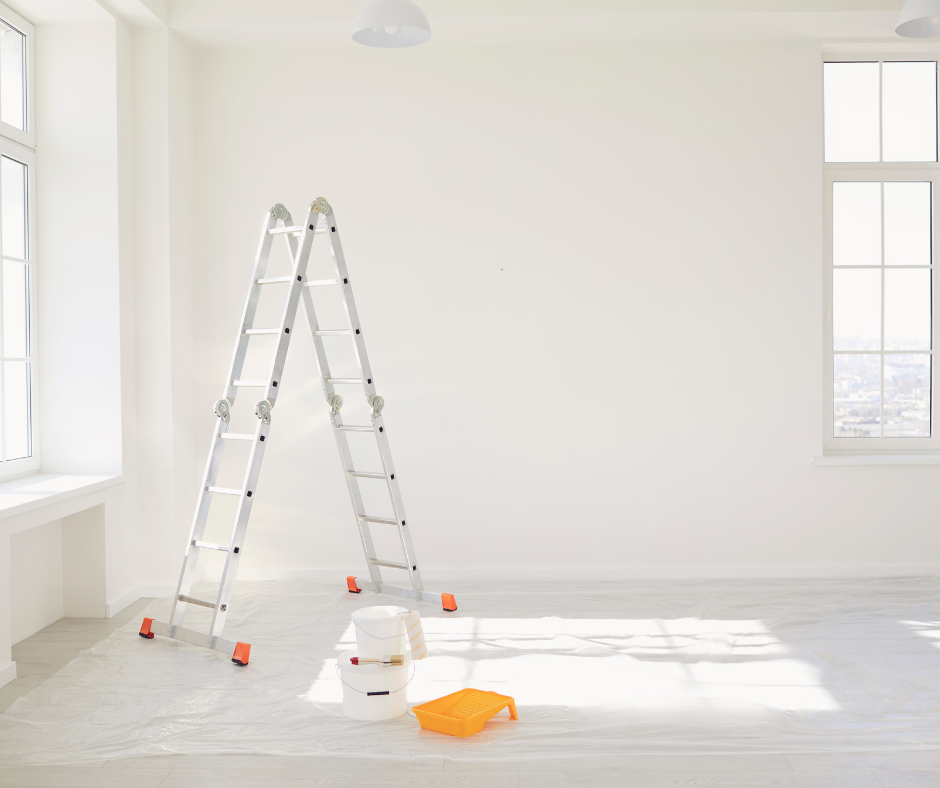

Reflective Paint: The World’s Whitest Shade Could Save You Thousands on Cooling Bills
Summary
Reflection Questions
Journal Prompt
Reflective paint offers a partial solution in the quest for energy efficiency and sustainability in our built environment. This innovation holds the potential to usher in a new era of cooling solutions, significantly reducing energy consumption and offering myriad benefits to homeowners, urban planners, and the environment at large.
In this article, we will highlight (no pun intended!) the world’s whitest reflective paint as a groundbreaking solution to slash cooling bills. We will explore the science, benefits, and real-world applications of this innovative technology, examining its potential to revolutionize energy efficiency in homes and urban planning. Read on to learn more!
The Science Behind Reflective Paint


Reflective paint operates on the fundamental principles of light reflection and absorption, pivotal in mitigating heat absorption on surfaces. The physics underlying this phenomenon involves the interaction of light waves with the paint’s surface. Unlike traditional paints that absorb a significant portion of sunlight, reflective paints are engineered to reflect a higher percentage of incident light.
When sunlight strikes a surface coated with reflective paint, most of the light waves bounce back rather than being absorbed. This is the key to reducing heat absorption and lowering temperatures. The science hinges on manipulating the paint’s composition to enhance this reflective capability, thus offering a practical solution for energy-efficient cooling.
The world’s whitest paint takes this concept to new heights by incorporating specific properties that amplify its reflective nature. This innovative paint employs advanced pigmentation and formulation techniques, achieving unprecedented reflectivity compared to standard white paints. Its microscopic structures and carefully chosen materials contribute to a surface that reflects light and an exceptional amount of sunlight, marking a significant advancement in the quest for effective and sustainable cooling solutions.
Development of the World’s Whitest Paint
Professor Xiulin Ruan and his team at Purdue University have spearheaded the creation of an extraordinary white paint with the potential to revolutionize how we cool our planet. The research aimed to address the rising demand for energy-efficient cooling solutions in buildings, culminating in the development of what is now recognized as the world’s whitest paint.
The breakthrough paint utilizes a novel formulation, incorporating barium sulfate, to achieve unparalleled reflective properties. Unlike traditional white paints that have top reviews and contain titanium dioxide, this innovative approach allows the paint to reflect light back into space, dramatically reducing heat absorption and surface temperatures.
The potential applications of this ultra-reflective paint are vast, from cooling individual buildings to mitigating the urban heat island effect in entire cities. Professor Ruan emphasizes the team’s initial motivation to combat climate change, turning a crisis into an opportunity to save energy and cool the Earth. Discussions with a significant paint producer indicate the imminent commercial availability of this groundbreaking product within the next one to two years. The paint’s versatility opens doors to transformative possibilities, envisioning its application on car roofs, highways, and various painted surfaces to harness its immense cooling benefits.
More About the Super-White Paint Created by Professor Ruan and His Team
In 2020, scientists at Purdue University pioneered a super-white acrylic paint, reflecting 95.5% of sunlight. Further advancements have elevated its sunlight reflection to 98.1%, setting a Guinness World Record. Professor Xiulin Ruan led the research to combat climate change by exploring ways to save energy while cooling the Earth.
The world’s whitest paint with its amazing reflective finish spray, formulated with barium sulfate particles, outperforms traditional white paints in cooling efficiency. It keeps surfaces significantly cooler, showcasing an eight-degree Fahrenheit temperature reduction during the day and up to 19 degrees at night. This innovation holds promise in mitigating the urban heat island effect, a consequence of buildings absorbing heat and raising temperatures.
Developed over six years, the paint’s composition involves a delicate balance, using barium sulfate to maximize reflectivity while avoiding cracking. Its potential to act as a natural cooling solution could reduce air conditioning needs by up to 40%, contributing to building energy efficiency.
While covering a significant portion of the Earth’s surface with reflective materials is necessary to curb global temperature rise, the whitest white paint presents a tangible and versatile solution. Its applications extend beyond rooftops, garnering interest from spacecraft manufacturers, architects, and even industries focused on clothing and footwear. The ongoing research aims to refine durability, and resistance to dirt and explore new color variations based on the ultra-white paint.
Benefits of Using the World’s Whitest Paint


The world’s whitest paint offers significant cooling benefits by reflecting sunlight, potentially saving substantial energy in buildings. With the ability to make surfaces up to 19 degrees cooler, it mitigates the urban heat island effect, fostering more comfortable environments in cities. It can be used on wood, plastic, metal, concrete and other semi transparent surfaces. There is no need to have heavy coats of reflective spray paint.
Beyond individual cooling, widespread adoption contributes to environmental sustainability by lowering energy consumption, aligning with global goals to combat climate change. Its multifaceted advantages position this innovative paint as a transformative solution for reducing both energy costs and the overall environmental impact of urban landscapes.
Benefits for Homeowners
Reduced Cooling Costs
The world’s whitest paint emerges as a game-changer for homeowners, offering a significant reduction in cooling costs. By efficiently reflecting sunlight away from buildings, this innovative paint minimizes the need for air conditioning, translating into substantial savings on energy bills. This advantage is particularly pronounced in regions with hot climates, presenting a practical and cost-effective solution for homeowners.
Improved Indoor Comfort


Beyond financial savings, the world’s whitest paint enhances indoor comfort by naturally maintaining cooler interior temperatures. This feature proves invaluable during heatwaves and in areas where air conditioning may not be universally accessible or is cost-prohibitive. The paint’s ability to create a more comfortable living environment especially on semi transparent surfaces adds a distinct dimension to its homeowner benefits.
Long-Term Durability
The potential for long-term durability and safety sets the world’s whitest paint apart. If proven to outlast standard exterior paints, homeowners benefit from extended intervals between repaintings. This not only translates to additional cost savings but also offers convenience over time, reducing the frequency of maintenance and upkeep associated with traditional paint options.
Environmental Impact


Choosing the world’s whitest paint is not just a financial decision; it’s an environmentally conscious one and also provides safety. By reducing their reliance on air conditioning, homeowners actively contribute to lower carbon emissions and decreased energy consumption.
This aligns with broader environmental sustainability goals, making the paint a compelling choice for those seeking to reduce their ecological footprint while enjoying the associated financial and comfort benefits. The world’s whitest paint emerges as a holistic solution, addressing the dual concerns of financial savings and environmental responsibility for homeowners.
Fuel your creative fire & be a part of a supportive community that values how you love to live.
subscribe to our newsletter
*please check your Spam folder for the latest DesignDash Magazine issue immediately after subscription


Benefits in Urban Planning
Mitigating Urban Heat Island Effect


The widespread application of the world’s whitest paint emerges as a powerful tool in urban planning to combat the Urban Heat Island (UHI) effect. Urban areas, characterized by concentrated structures, suffer from elevated temperatures as these structures absorb and re-radiate heat. By reflecting more sunlight, this innovative paint contributes to cooling urban environments, effectively mitigating the UHI effect and fostering more habitable cities.
Energy Efficiency at Scale
Urban planners can revolutionize cityscapes by incorporating the world’s whitest paint into building codes and standards. This technological integration enhances the overall energy efficiency of entire cities, presenting a sustainable solution to reduce the demand for cooling. This forward-thinking approach aligns with broader initiatives for environmentally conscious urban infrastructure.
Enhanced Public Health


Cooler urban environments facilitated by the world’s whitest paint lead to tangible improvements in public health. By reducing heat-related illnesses and deaths, particularly among vulnerable populations such as the elderly, children, and those with pre-existing health conditions, urban planners can prioritize community well-being through thoughtful design and technology integration.
Infrastructure Protection
The paint’s contribution to cooler temperatures plays a vital role in prolonging the lifespan of urban infrastructure. By mitigating thermal expansion stress on materials, such as roads, bridges, and buildings, the world’s whitest paint offers a practical solution to reduce maintenance costs, ensuring the longevity and sustainability of critical urban structures.
Innovative Urban Design


The adoption of the world’s whitest paint sparks innovation in urban design, paving the way for cooler, more livable cities. This technology becomes a key element in green building certifications and sustainability projects, facilitating ecological urban development. It opens new possibilities for architects and planners to create environments that prioritize both environmental sustainability and the well-being of inhabitants.
Supporting Renewable Energy
Reflective surfaces, including the world’s whitest paint, contribute to the efficiency of solar panels by reducing ambient temperatures. This dual benefit not only aids in cooling urban areas but also enhances the potential for renewable energy generation within cities. Urban planners can leverage this synergy to create more sustainable and resilient urban landscapes that support the integration of renewable energy sources.
Comparison With Other Cooling Technologies


The world’s whitest paint emerges as a compelling alternative when compared to traditional cooling technologies, particularly air conditioning and other reflective paints. In terms of cost-effectiveness, the paint presents a distinct advantage. Unlike air conditioning systems, notorious for their high energy consumption and subsequent utility costs, the whitest paint operates passively, requiring no energy input to achieve substantial cooling effects. This positions it as a cost-effective, environmentally friendly solution with the potential for significant long-term savings.
Compared with other reflective paints, the world’s whitest paint outshines in reflectivity, boasting a remarkable 98.1% sunlight reflection. Traditional reflective paints, typically containing titanium dioxide, fall short in achieving such high reflectivity levels. The innovative use of barium sulfate in the whitest reflective spray paint not only contributes to its exceptional reflectivity but also enhances durability, offering a superior option for achieving optimal cooling outcomes.
However, considerations arise when choosing between these options. The efficacy of the whitest reflective spray paint may be influenced by factors like the surface it is applied to and the surrounding environment. While it excels in reducing cooling costs and energy consumption, widespread application is essential to observe significant impacts on a broader scale. In contrast, air conditioning provides instant relief but at the expense of higher energy bills. The choice between these technologies hinges on a careful balance of immediate cooling needs and the long-term benefits of sustainability, reduced energy consumption, and cost-effectiveness, where the world’s whitest paint emerges as a promising and innovative contender.
Implementation Challenges and Solutions
Cost Considerations
The initial cost of applying the world’s whitest spray paint on a large scale may be perceived as a barrier for widespread adoption. Ongoing research focuses on optimizing the production process and exploring cost-effective formulations. Additionally, collaborations with public and private sectors could lead to financial incentives, making the transition more economically feasible.
Durability Concerns
Questions about the long-term safety, durability of the paint, especially in varying environmental conditions, may arise. Research efforts are dedicated to refining the paint’s composition to ensure enhanced durability. Testing under diverse climatic conditions and continuous monitoring of real-world applications contribute to identifying and addressing potential durability issues.
Climate Variability
Different climates may impact the paint’s performance differently, raising concerns about its efficacy in extreme temperatures or fluctuating weather conditions. Ongoing studies explore adaptations of the paint formulation to cater to diverse climates. Regionalized research and development efforts consider specific environmental challenges, ensuring the paint’s effectiveness across a range of conditions.
Application Techniques
The application process may require specific techniques, potentially posing challenges for existing infrastructure or conventional painting methods. Research and development initiatives include refining application processes, exploring adaptable technologies, and collaborating with industries to develop user-friendly application methods. Standardization of application techniques ensures efficiency and accessibility.
Public Awareness and Acceptance
Lack of awareness or skepticism about the benefits of the world’s whitest paint may hinder public acceptance. Public education campaigns, collaborations with architectural and design communities, and showcasing successful case studies contribute to raising awareness and fostering acceptance. Transparent communication about the technology’s advantages addresses potential misconceptions.
Regulatory Compliance
Meeting regulatory standards and building codes with a novel technology may present hurdles. Collaboration with regulatory bodies and policymakers is essential. Research endeavors include ensuring the paint aligns with existing building codes and standards, paving the way for smoother integration into construction practices.
Supply Chain Challenges and Availability
Ensuring a consistent and accessible supply of the world’s whitest paint for large-scale applications. Strategic partnerships with paint manufacturers and suppliers can streamline production and distribution. Ongoing efforts to optimize supply chains contribute to a seamless availability of the paint in the market.
Final Thoughts on the Potential of Stark White Paint


The world’s whitest paint could be a transformative solution by reducing cooling costs, mitigating the urban heat island effect, and fostering environmental sustainability. Its innovative impact extends beyond financial savings to influence urban planning, infrastructure protection, and even support for renewable energy. It offers a semi transparent surface and also enhances nighttime visibility and has a rust oleum specialty. Plus, there is no need to apply heavy coats.
This paint is one step towards addressing enhanced safety, climate change and signifies the profound potential of innovative technologies in curbing energy costs while fostering a sustainable future.
By Anila Hasnain.
Design Dash
Join us in designing a life you love.
-
What is Tax-Loss Harvesting, Is It Legal, and Does It Build Wealth?
A legal and simple strategy, tax-loss harvesting helps you offset capital gains and grow your wealth by reducing your tax bill.
-
DesignDash Guide: Create the Ultimate Fall Capsule Wardrobe
Build a fall capsule wardrobe to streamline your style, save time, and support sustainability with versatile, high-quality pieces.
-
How to Support a Partner Who is Making a Major Career Change
Wondering how to be a supportive partner during periods of transition? Here’s how to care for your partner (and yourself) during this time.
-
How Dollar-Cost Averaging Can Help You Navigate Market Volatility
Learn how dollar-cost averaging (DCA) can help you grow your wealth with consistency and ease, even during market volatility.
-
Fall Meal Prep: Maximizing Space for Soups, Stews, and Bakes
From decluttering your pantry to creating a cozy prep station you’ll actually enjoy, here’s how to organize your kitchen for fall meal prep.
-
Looking to the Future? Maybe It’s Time to Refresh Your Firm’s Brand
Your interior design business shouldn’t have to rebrand every time you open a new studio or add a new service, but it might need a brand refresh.








